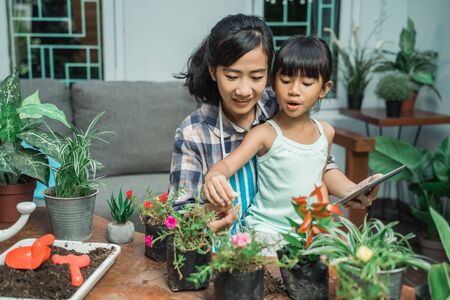1. Understanding Feng Shui in an American Context
Feng Shui, pronounced “fung shway,” is an ancient Chinese practice that focuses on arranging spaces to create balance and harmony. While its roots are in Eastern philosophy, many of its core ideas can easily connect with American families looking to make their homes more peaceful and supportive for their children. By looking at Feng Shui through a familiar lens, it becomes less mysterious and more practical for everyday life.
What Is Feng Shui?
At its heart, Feng Shui is about the flow of energy—called “chi”—and how our environment affects our mood, health, and success. In the same way that Americans might talk about “good vibes” or making a room feel “cozy,” Feng Shui offers guidelines for making spaces feel inviting and balanced.
Core Feng Shui Principles (With American Parallels)
| Feng Shui Principle | American Perspective |
|---|---|
| Balance of Elements (Wood, Fire, Earth, Metal, Water) | Mixing textures and colors—like adding wood furniture, a water feature, or plants—to make a room feel complete |
| Decluttering | “Spring cleaning” or organizing to reduce stress and increase happiness |
| Natural Light and Air Flow | Opening windows for fresh air; using sunlight to brighten rooms for positive energy |
| Positive Placement | Arranging furniture so you can see the door (like putting a desk facing out), making kids feel secure and confident |
Why It Matters for Families and Kids
The home environment shapes how children learn, grow, and relax. Many parents in America already use strategies that echo Feng Shui principles—like creating quiet reading nooks, decorating with favorite colors, or organizing toys into bins. By understanding the basics of Feng Shui, families can build on what they already do to support their children’s well-being.
Everyday Examples of Feng Shui in American Homes:
- A family mudroom helps keep shoes and backpacks organized—just like clearing clutter in Feng Shui.
- A cozy living room with photos and soft blankets creates a sense of belonging and comfort.
- Kitchens with open counters invite togetherness during meals.
- Children’s bedrooms decorated with bright colors or calming themes support rest and creativity.
By thinking about Feng Shui as another tool in the toolbox of home design, parents can make small changes that have a big impact on family life. This approach works especially well when adapted to American tastes and routines.
2. Why Feng Shui Matters for Kids’ Spaces
Feng Shui is more than just arranging furniture—it’s about creating a balanced environment that supports children’s growth and happiness. In American families, parents often focus on helping their kids feel safe, confident, and inspired. Using Feng Shui in kids’ spaces can support these goals by promoting physical comfort, emotional stability, and mental clarity.
How Feng Shui Supports Your Child’s Well-Being
| Benefit Area | How Feng Shui Helps | Connection to Parenting Goals |
|---|---|---|
| Physical Health | Encourages good air flow, natural light, and clutter-free play areas. | Promotes safety and healthy habits. |
| Emotional Stability | Uses calming colors and soft shapes to create a peaceful atmosphere. | Reduces stress and boosts confidence. |
| Mental Focus | Designates clear zones for study, play, and rest. | Helps children concentrate and stay organized. |
| Family Connection | Arranges shared spaces to encourage bonding and communication. | Builds stronger family relationships. |
Everyday Examples That Fit American Life
- Study Corners: Placing desks away from distractions like TVs helps kids focus on homework—something every parent values.
- Bed Placement: Positioning beds so children can see the door but aren’t directly in line with it helps them feel secure at night.
- Toy Organization: Using bins or shelves keeps toys tidy, making cleanup easier and encouraging responsibility.
- Nurturing Colors: Soft blues or greens in bedrooms can help kids relax after a busy day at school or sports practice.
The Big Picture: Creating Harmony at Home
By applying simple Feng Shui ideas, American families can make their homes places where children feel supported in every way. This not only helps kids thrive but also makes daily family life smoother and more joyful.

3. Simple Feng Shui Tips for Kids’ Bedrooms
Arranging Furniture for Flow and Safety
The way you arrange furniture in your child’s bedroom can make a big difference in how they feel and sleep. In Feng Shui, it’s important to create open spaces and avoid clutter. Here are some easy tips:
- Bed Placement: Place the bed against a solid wall, with a clear view of the door but not directly in line with it. This helps your child feel safe and secure.
- Avoid Clutter: Keep toys, books, and clothes organized in bins or baskets. Too much clutter can make kids feel overwhelmed and restless.
- Clear Pathways: Make sure there’s plenty of room to walk around the bed and other furniture. This allows positive energy (or “chi”) to flow easily throughout the room.
Choosing Colors for Positive Energy
The right colors can help children feel calm, happy, and focused. Here’s a quick guide to choosing Feng Shui-friendly colors that work well in American homes:
| Color | Mood/Effect | Best For |
|---|---|---|
| Soft Blue | Calming, encourages sleep | Walls, bedding |
| Pale Green | Refreshing, supports growth | Decor accents, rugs |
| Pale Yellow | Cheerful, boosts confidence | Curtains, wall art |
| Lavender | Soothing, reduces anxiety | Pillows, blankets |
| Neutral Beige or White | Cleansing, peaceful backdrop | Main walls or large furniture pieces |
Selecting Decor for Harmony and Comfort
Decor items should be both fun and meaningful for your child. Choose artwork or photos that make them smile—think family pictures or their own drawings. Avoid scary images or sharp objects. Soft textures like plush rugs or cozy blankets help create a sense of safety and warmth.
Toy Organization Ideas:
- Shelves: Use low shelves so kids can reach their favorite books and toys easily.
- Baskets & Bins: Label bins with words or pictures to keep things tidy and encourage responsibility.
- Nightstand Essentials: A small lamp and a favorite stuffed animal can provide comfort at bedtime.
Lighting for Restful Sleep and Daytime Play
Good lighting is essential in any kid’s bedroom. Natural light helps boost mood during the day. At night, use soft bedside lamps instead of harsh overhead lights to create a relaxing atmosphere before bedtime. Try blackout curtains if early morning sunlight wakes your child too soon.
4. Feng Shui in Playrooms and Study Areas
Why Feng Shui Matters in Kids’ Spaces
Playrooms and study areas are more than just places for fun or homework—they shape how children learn, grow, and connect with family. Using Feng Shui principles in these spaces can encourage creativity, better focus, and stronger family bonds. Let’s explore simple, practical ways to bring balance and harmony to your child’s play and learning zones, using examples familiar to American families.
Organizing for Creativity and Focus
1. Zone Your Space: Divide the room into clear zones—one for play, another for studying. Use colorful area rugs or low shelves as gentle boundaries. This helps kids switch gears between fun and learning.
2. Choose the Right Colors: Soft greens and blues work well for study corners—they calm the mind. Bright yellows or oranges can energize a play zone. Try painting one wall or adding pillows in these colors.
3. Light Matters: Place desks or craft tables near windows to let in natural light. If that’s not possible, use adjustable desk lamps with warm bulbs to create a cozy atmosphere that encourages focus.
Furniture Placement: The Command Position
The “command position” means placing your child’s desk or favorite chair so they face the door but aren’t directly in line with it. In many American homes, this might mean angling the desk toward the door but against a solid wall—helping kids feel safe and aware of their surroundings while they work or play.
Sample Layouts for Common American Spaces
| Space Type | Feng Shui Placement | American Example |
|---|---|---|
| Small Bedroom Study Nook | Desk against a wall facing the door (not back to door) | Corners of shared siblings’ rooms |
| Basement Playroom | Shelves along walls, open space in center for movement; reading nook near window if possible | Finished basement with activity zones |
| Open-Plan Living Area | Use rugs or bookcases to define play/study spots; keep clutter out of walkways | Main floor play corner next to kitchen/family room |
Tidiness and Personalization Go Hand-in-Hand
Tidy spaces support good energy flow. Encourage kids to tidy up by making storage easy—bins labeled with pictures or words, baskets under benches, or cubbies at kid-height are all popular in American homes. Let children personalize their space with art or favorite items on shelves, but avoid overcrowding to maintain balance.
Quick Tips for American Families:
- Rotate toys and books so shelves don’t get cluttered.
- Add plants like pothos or spider plants—they’re easy-care and boost air quality.
- Create a display board for artwork instead of taping items everywhere.
- If siblings share a space, give each child a small area for their treasures.
- Avoid placing desks directly under heavy shelves or ceiling fans—it can feel unsettling for kids.
Applying these simple Feng Shui ideas can help transform any playroom or study area into a place where kids feel energized, focused, and connected with their family—no matter the size or style of your home.
5. Involving Kids and Family in the Feng Shui Journey
Making Feng Shui a Family Affair
Introducing Feng Shui into your home is more fun and meaningful when everyone gets involved—especially kids! By turning Feng Shui into a family activity, you not only create a harmonious space but also help your children feel more connected to their environment and each other. Here are some easy ways to engage your whole family in the Feng Shui journey.
Fun Activities for Kids and Parents
- Color Hunt: Let kids choose colors for their rooms or shared spaces based on the Feng Shui Bagua map. Ask them what colors make them feel calm, happy, or energized, and use these in decor choices.
- Treasure Box Project: Have children decorate a special box where they can keep items that bring them joy or represent positive intentions—like photos, awards, or small keepsakes.
- Room Makeover Challenge: Give each child a small budget or “shopping” day at home to rearrange furniture, add plants, or swap out accessories for better energy flow.
- Nature Walks: Collect rocks, leaves, or branches during family walks to use as natural decor that brings Earth energy into your living spaces.
Simple DIY Feng Shui Projects
| Project | Materials Needed | Age Group | Description |
|---|---|---|---|
| Create a Family Vision Board | Magazines, scissors, glue, poster board | All ages (with adult help) | Cut out images and words representing dreams and goals. Display somewhere special to inspire everyone. |
| DIY Good Luck Charms | Pebbles, paint pens, string | K-12+ | Paint symbols or words of positivity on stones; hang by doors or windows for good vibes. |
| Mood-Boosting Plant Pots | Clay pots, paints, soil, easy-care plants | Ages 5+ | Let kids paint pots with their favorite colors and care for their own plant in the house. |
| Personalized Door Signs | Wooden signs, markers/paint, stickers | Ages 4+ | Create unique door signs with names or uplifting messages for each bedroom. |
Age-Appropriate Responsibilities for Harmony at Home
| Age Group | Suggested Tasks |
|---|---|
| Ages 3-6 | Tidying up toys daily; picking out two favorite stuffed animals to display; helping water plants. |
| Ages 7-10 | Selecting wall art or posters; choosing bedding colors; dusting shelves and organizing books. |
| Ages 11-14 | Rearranging furniture with guidance; creating vision boards; leading room cleaning routines. |
| Ages 15-18+ | Taking charge of personal space decluttering; helping plan family common area improvements; researching new Feng Shui ideas online. |
Nurturing Connection Through Shared Spaces
Create zones in your home where the whole family can come together—like a reading nook or art corner. Encourage everyone to contribute ideas about how these spaces look and function. This not only empowers kids but builds a sense of ownership and harmony throughout your home.


